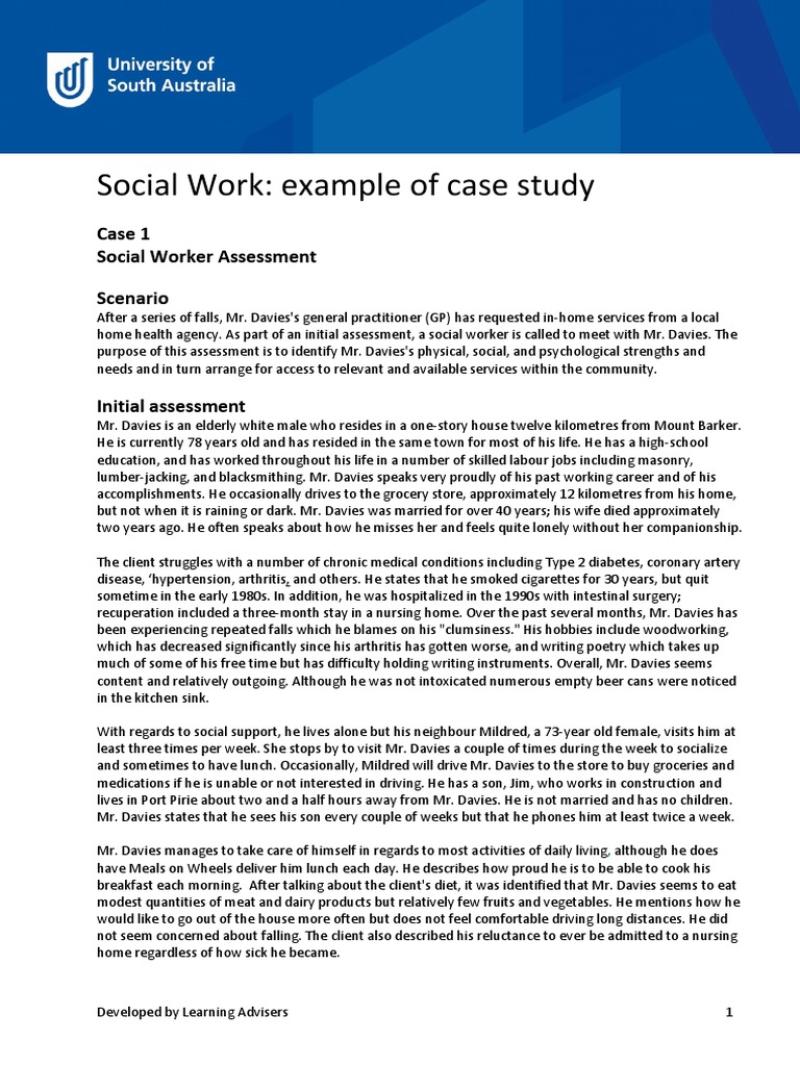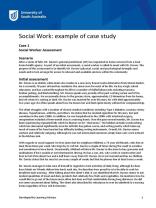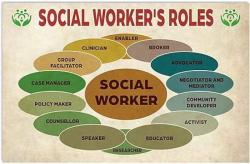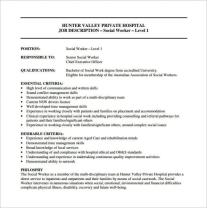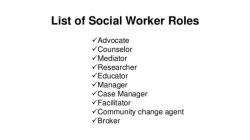How do I write a social work case study report?
Here’s a clear, step-by-step guide for writing a social work case study report that works for both academic and professional settings. I’ll focus on structure, tone, and content so your report is well-organized, ethical, and useful.
1. Understand the Purpose
A social work case study report is meant to:
Present a client’s background and current situation.
Explain the assessment process and findings.
Outline interventions and their rationale.
Reflect on outcomes and lessons learned.
Keep in mind:
Confidentiality is critical — never reveal identifying information.
The tone should be professional, objective, and respectful.
2. Suggested Structure
A. Title Page
Title of the report (e.g., Case Study: Supporting an Older Adult with Housing Instability).
Your name and role.
Date.
Agency or institution name.
B. Introduction
Brief overview of the case (without identifiers).
Purpose of the report.
Context (e.g., academic assignment, agency documentation, policy analysis).
C. Client Background
Include only relevant, non-identifying details:
Age range, gender, cultural background.
Living situation.
Key personal history (family, education, work).
Presenting problem or reason for referral.
D. Assessment
Explain how you gathered information and what you found:
Assessment tools/methods used (e.g., interviews, home visits, standardized scales).
Summary of the client’s strengths and needs.
Risk factors and protective factors.
Relevant theoretical frameworks (e.g., strengths-based, systems theory).
E. Intervention Plan
Goals (short-term and long-term).
Services or supports provided.
Rationale for chosen interventions.
Timeline for implementation.
F. Outcomes
Progress toward goals.
Any changes in the client’s situation.
Barriers encountered.
Feedback from the client (if applicable).
G. Reflection and Analysis
What worked well.
What could be improved.
Implications for future practice.
Connections to social work theories or policies.
H. Conclusion
Brief summary of the case trajectory.
Final recommendations or next steps.
I. References
Cite any literature, assessment tools, or frameworks used (APA format if academic).
3. Writing Tips
Protect confidentiality: Use pseudonyms and remove identifying details.
Be factual: Separate observation from interpretation.
Stay concise: Focus on information relevant to the client’s needs and interventions.
Be culturally sensitive: Acknowledge cultural, social, and environmental factors.
Use clear headings so the reader can follow the narrative easily.
4. Common Mistakes to Avoid
Including unnecessary personal details.
Using jargon without explanation.
Mixing subjective opinions with objective facts.
Omitting analysis or critical reflection.
Sample Social Work Case Study Report
Title Page
Case Study Report: Supporting an Older Adult Experiencing Housing Instability
Prepared by: Jane Smith, MSW Candidate
Date: August 9, 2025
Agency: Riverbend Community Services
1. Introduction
This case study presents an intervention with an older adult client facing housing instability after a sudden loss of income. The report aims to illustrate assessment methods, intervention strategies, and outcomes, with reflection on practice implications.
2. Client Background
Pseudonym: Mr. “Lee”
Age: 68
Gender: Male
Cultural Background: Chinese American
Living Situation: Renting a single-room apartment; no immediate family nearby.
Referral Reason: Threat of eviction due to missed rent payments after loss of part-time employment.
Relevant History: Stable work history until recent job loss; receives Social Security benefits but insufficient for rent and utilities. Reports mild mobility limitations due to arthritis.
3. Assessment
Methods Used:
Two in-person interviews.
Financial and housing needs assessment.
Consultation with landlord regarding tenancy history.
Key Findings:
Strengths: Strong self-advocacy skills, established ties to local senior center, previous ability to manage finances.
Needs: Immediate financial assistance, connection to affordable housing options, medical support for arthritis.
Risk Factors: Risk of homelessness, potential social isolation.
Protective Factors: Positive relationship with landlord, willingness to engage with services.
Framework Applied: Strengths-based approach, combined with systems theory to address interconnected housing, health, and social needs.
4. Intervention Plan
Goals:
Prevent eviction and maintain stable housing.
Secure ongoing affordable housing support.
Connect client with medical and social resources.
Actions Taken:
Assisted client in applying for emergency rental assistance (approved within 10 days).
Facilitated referral to a housing voucher program for low-income seniors.
Coordinated with primary care provider for arthritis management plan.
Linked client to senior center’s transportation program.
Timeline: Initial intervention completed within one month; ongoing follow-up for six months.
5. Outcomes
Eviction prevented; rent fully paid for two months while housing voucher processing was underway.
Client approved for senior housing voucher, reducing rent by 60%.
Increased access to medical care and participation in community activities twice weekly.
Client reports reduced stress and improved mobility.
6. Reflection and Analysis
What Worked Well:
Early engagement with landlord fostered collaboration rather than conflict.
Coordinated service approach addressed multiple needs simultaneously.
Challenges:
Short-term rental assistance took longer than expected to process.
Client initially hesitant to share financial details; trust-building was essential.
Implications for Practice:
Quick landlord contact can be a key eviction-prevention strategy.
Integrating medical and social supports enhances client stability.
7. Conclusion
The intervention successfully stabilized Mr. Lee’s housing and improved his overall well-being. The case highlights the importance of rapid response, strong community partnerships, and culturally sensitive engagement in social work practice.
8. References
National Association of Social Workers. (2021). NASW Code of Ethics.
Payne, M. (2020). Modern Social Work Theory (5th ed.). Oxford University Press.
How to Write a Social Work Case Study Report?
A social work case study report is a comprehensive document that details a social worker's professional involvement with a client or a family.
What Are the Key Sections of a Social Work Report?
A well-structured social work report typically includes these key sections:
Client Information: Basic demographic data, reason for referral, and a brief history.
Assessment: An in-depth analysis of the client's needs, strengths, challenges, and environmental factors.
This section should be based on observed evidence and client self-reports. Intervention Plan: The goals and objectives of the social work intervention, collaboratively developed with the client.
Implementation/Progress Notes: A chronological record of the actions taken, including meetings with the client, referrals made, and progress toward goals.
Evaluation: An analysis of the outcomes, discussing whether the intervention goals were met and the overall effectiveness of the support provided.
Recommendations: Suggestions for future services, follow-up, or a termination plan.
How to Present Client Information Ethically?
Presenting client information ethically is paramount to maintaining confidentiality and trust. Always use de-identified information or a client code instead of a full name. Obtain informed consent from the client before sharing any of their information, except in cases where there is a legal obligation to disclose (e.g., suspected abuse or threat of harm to self or others). Focus on providing only the information that is necessary and relevant to the case, avoiding any personal details that aren't pertinent to the professional purpose of the report. This practice helps to protect the client's privacy and dignity.
What Is the Importance of Assessment and Intervention Sections?
The Assessment and Intervention sections are the core of a social work report. The assessment section is critical because it forms the foundation for all subsequent actions. It demonstrates a social worker's analytical skills and their ability to understand a client's complex situation within a theoretical framework. A thorough assessment justifies the intervention plan. The intervention section is equally important as it details the specific, measurable, achievable, relevant, and time-bound (SMART) goals and the strategies used to help the client.
How to Use Clear and Professional Language in Reports?
To ensure your reports are clear and professional, follow these guidelines:
Be Objective: Use factual language and avoid emotional or judgmental descriptions. Instead of "the client was lazy," write "the client reported difficulty completing tasks."
Avoid Jargon: Use plain, simple language that can be understood by a wide range of professionals and clients. If technical terms are necessary, define them.
Use Active Voice: Write concisely and directly. For example, "I met with the client" is clearer than "The client was met with by me."
Proofread Carefully: Errors in spelling and grammar can undermine the credibility of your report.
Take the time to review your work for mistakes. Maintain an Ethical Tone: The language used should be respectful and empowering, reflecting the social work value of client self-determination.
